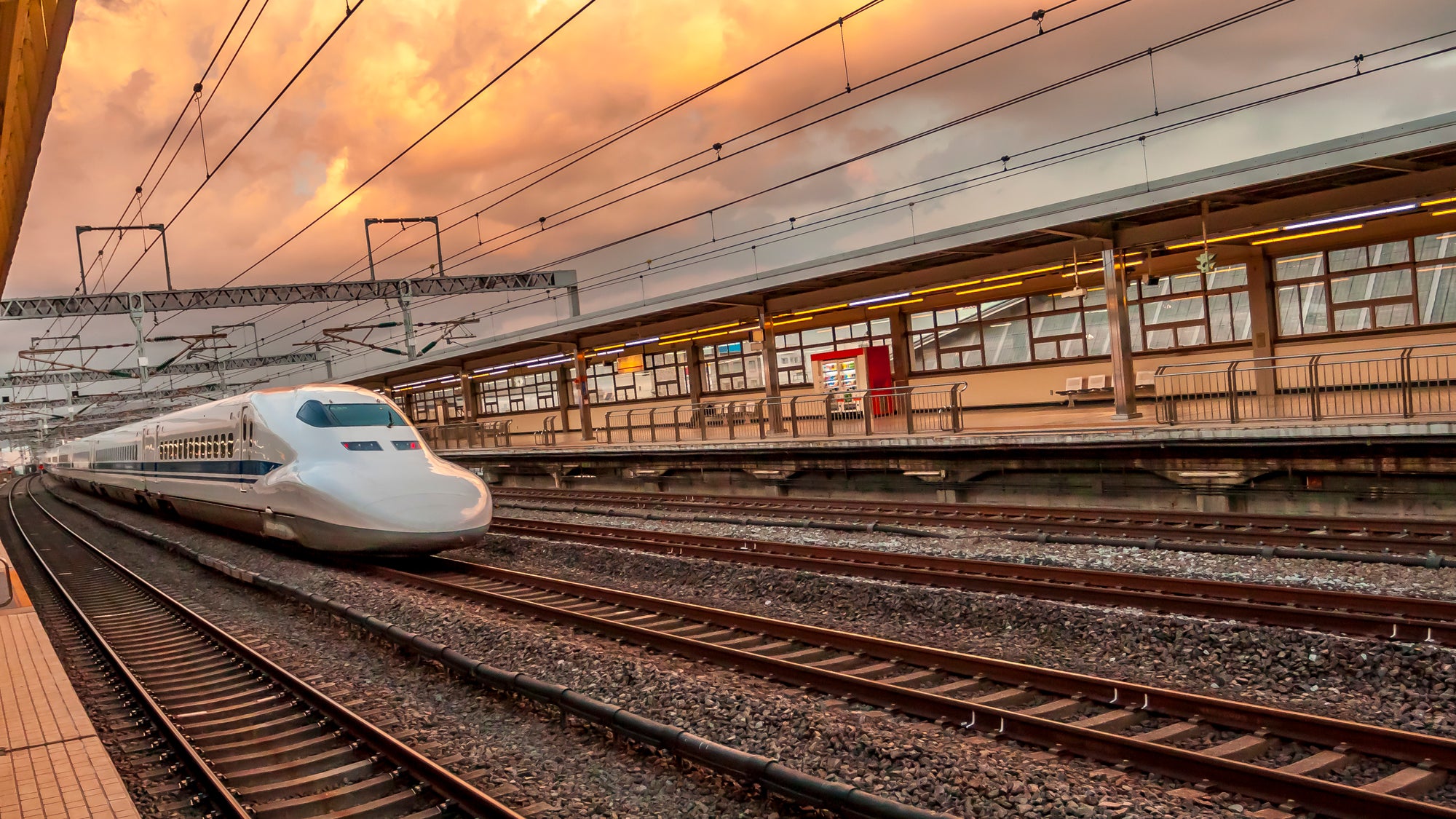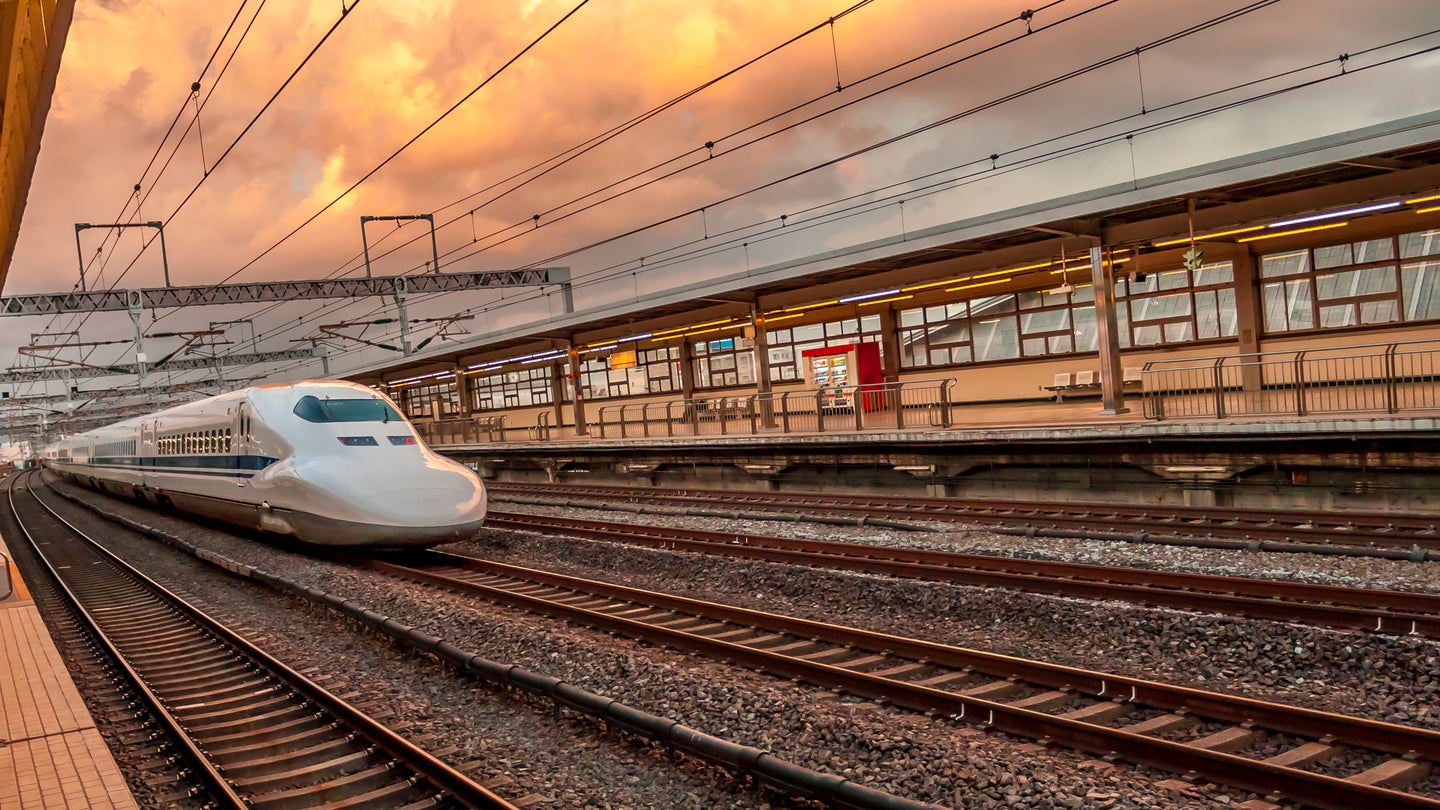
Texas could get a 205-mph bullet train zipping between Houston and Dallas
The proposed electric railway line could travel 240 miles in under 90 minutes for over 6 million passengers per year.
 www.popsci.com
www.popsci.com
Texas could get a 205-mph bullet train zipping between Houston and Dallas
The proposed electric railway line could travel 240 miles in under 90 minutes for over 6 million passengers per year.BY ANDREW PAUL | PUBLISHED AUG 10, 2023 4:00 PM EDT

Japan's bullet trains could finally be coming to America. DEPOSIT PHOTOS
A new high-speed railway system inspired by Japanese bullet trains could someday carry commuters between Houston and Dallas in under 90 minutes. Announced on Wednesday, the partnership between Amtrak and a company called Texas Central aims to connect the two cities by train, spanning roughly 240 miles at speeds upwards of 205 mph.
According to Quartz, the applications have already been submitted to “several federal grant programs” to help finance research and design costs. Amtrak representatives estimate the project could reduce greenhouse gas emissions by over 100,000 tons annually and remove an estimated 12,500 cars per day from the region’s I-45 corridor. The reduction in individual vehicles on the roads could also save as much as 65 million gallons of fuel each year.
[Related: High-speed rail trains are stalled in the US—and that might not change for a while.]
The trains traveling Amtrak’s Dallas-Houston route would be based on Japan’s updated N700S Series Shinkansen “bullet train,” a design that first debuted in 2020. Bullet trains have operated in Japan for over half a century, and are now completely electric, as well as lighter and quieter than traditional railcars. Additionally, the transportation method generates just one-sixth the amount of carbon-per-passenger mile than a standard commercial jet, according to Texas Central’s descriptions.
“This high-speed train, using advanced, proven Shinkansen technology, has the opportunity to revolutionize rail travel in the southern US,” Texas Central CEO Michael Bui said via the August 9 announcement.
[Related: A brief, buttery ride on Shanghai’s maglev train.]
American city planners have been drawn to the idea of high-speed railways for decades, but have repeatedly fallen short of getting them truly on track due to a host of issues, including funding, political pushback, and cultural hurdles. That said, 85 percent of recently surveyed travelers between Dallas and the greater North Texas area indicated they would ride such a form of transportation “in the right circumstances.” If so, as many as 6 million travelers could be expected to ride the train by the end of the decade, with the number rising to 13 million by 2050. Similar high-speed projects are also in the works to connect San Francisco and Los Angeles (though no track has actually been installed yet), as well as another that hopes to connect LA and Las Vegas, although repeated setbacks have delayed such endeavors.
“The US is really a very auto-centric country,” Ian Rainey, a senior vice president at Northeast Maglev, told PopSci in 2022. “… If you can get that sweet spot of big populations that are 100 to 300 miles apart from each other, I think you’ve got a winner for high-speed rail.”





 ....
....